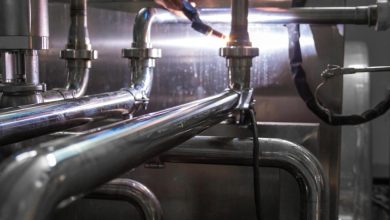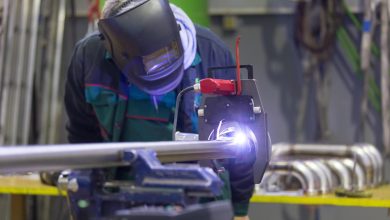Seamless Strength: Why Orbital Welding is Essential for Stainless Steel Tanks

Maintaining the integrity and strength of stainless steel tanks is vital across various industries. These tanks, often used for storing, transporting, and processing liquids, rely on orbital welders to achieve consistent, high-quality welds. This blog explores the crucial role of orbital welders in ensuring the structural integrity and functionality of stainless steel tanks.
Understanding the Importance of Welding Stainless Steel Tanks:
Several factors highlight the importance of welding in stainless steel tanks:
- Leak Prevention: Secure and reliable welds are crucial for preventing leaks, ensuring the safe storage and transportation of liquids, and minimising product loss or contamination.
- Structural Strength: Stainless steel tanks need robust welds to withstand internal pressure, external forces, and the weight of the contained liquid, ensuring their structural integrity and longevity.
- Hygiene and Cleanliness: In industries like food and beverage production or pharmaceuticals, smooth and consistent welds minimise crevices where bacteria or contaminants can harbour, promoting hygiene and cleanability.
Why Choose Orbital Welding for Stainless Steel Tanks?
Orbital welders offer several advantages over traditional manual welding methods for stainless steel tanks:
- Consistent Weld Quality: The automated nature of orbital welding ensures consistent weld geometry, penetration depth, and minimal heat distortion, resulting in reliable and high-quality welds throughout the entire tank.
- Reduced Risk of Human Error: By eliminating the reliance on manual manipulation, orbital welding minimises the risk of human error, leading to fewer defects and rework.
- Improved Efficiency: Compared to manual welding, orbital welding is faster, reducing overall production time and improving project efficiency.
- Accessibility: The automated weld head can access tight spaces within the tank, ensuring proper welding even in areas that are difficult to reach manually.
- Repeatability: When dealing with multiple tanks, orbital welding guarantees consistent quality across all welds, ensuring consistent performance and reliability.
Other Considerations for Welding Stainless Steel Tanks:
While orbital welders offer significant benefits, other factors play a role in achieving optimal results:
- Welder Expertise: Choosing experienced and qualified welders is crucial for setting up and operating the orbital welding equipment effectively.
- Filler Metal Selection: Selecting the appropriate filler metal, compatible with the specific type of stainless steel, ensures optimal weld strength and corrosion resistance.
- Welding Parameters: Setting the correct welding parameters, such as voltage, amperage, and travel speed, is crucial for achieving the desired weld characteristics.
Conclusion:
Orbital welders have become the go-to solution for achieving robust and consistent welds in stainless steel tanks. This technology ensures leak-proof integrity, structural strength, and hygiene, contributing to the optimal performance and longevity of these essential vessels across various industries. By considering the key benefits and other crucial factors, urban contractors can make informed decisions about incorporating orbital welders into their stainless steel tank fabrication processes.



